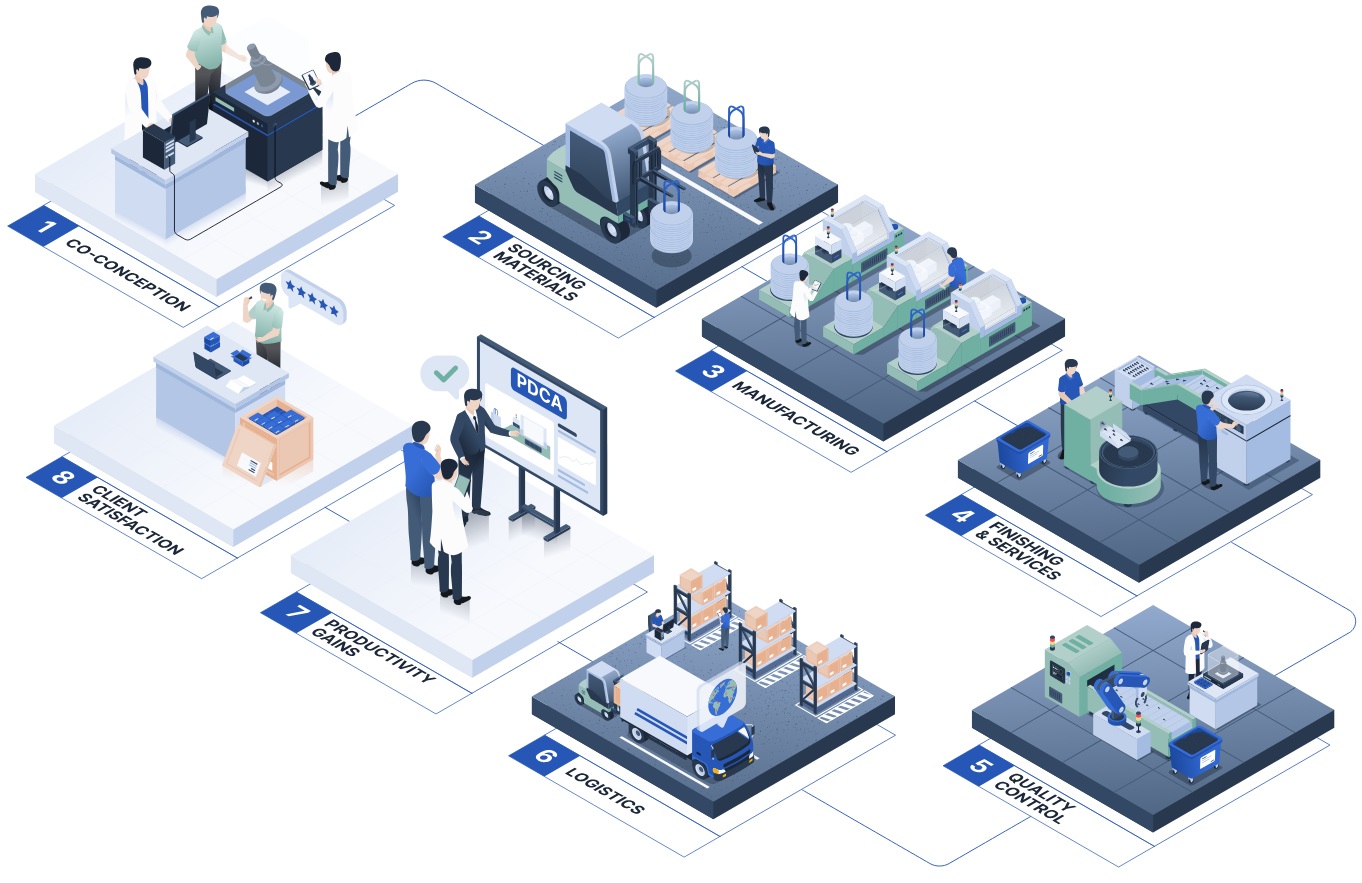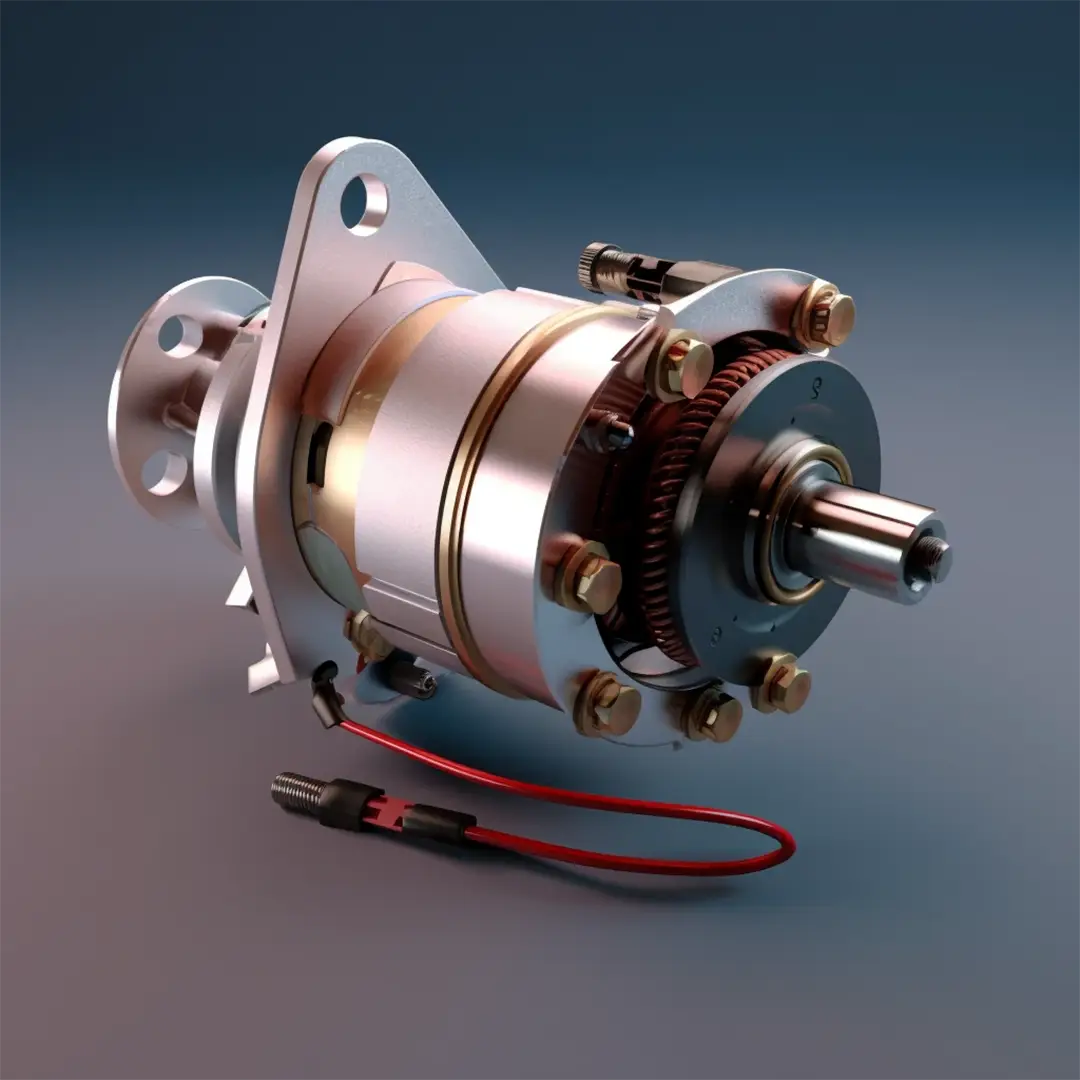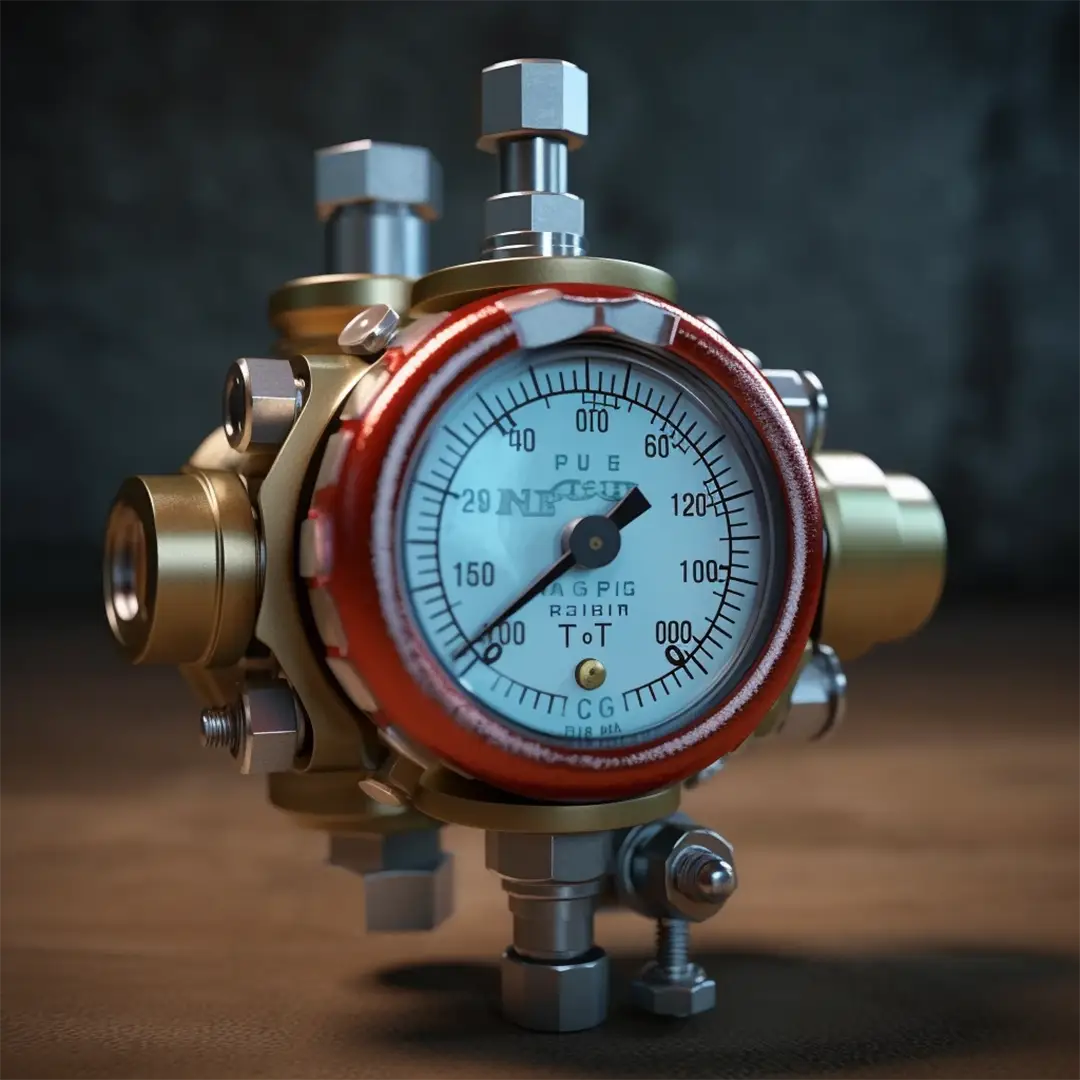2, rue de la Ternière
Avrillé cedex FRANCE
Bar turning is a manufacturing process for precision parts, mainly used in industry.
It consists of machining cylindrical parts by turning or milling them from bars or rings using material removal.
- Bar turning enables the production of complex, high-precision parts used in many sectors such as the automotive, aerospace and electronics industries.
- Our cam-type lathes and high-speed CNC lathes enable us to work with hundredths precision on medium and large production runs.
Bar turning - Machining - Mechanical parts to drawing





Bar turning - Machining - Mechanical parts to drawing







- Feasibility checks using the FMEA tool, which is used to analyze failure modes, their effects and criticality.

- Production of initial samples in medium series, and validation of production with PPAPs in accordance with IATF 16949.

- Development of detailed production processes according to the APQP quality process

- Collection and analysis of production data to identify trends and variations. 3PPM in 2023.
The advantages of manufacturing with LGC Industries


.png)

.png)


- 24 Multi-spindle lathes
- 45 Tours Escomatic
- 42 Banding machines
- 8 Plunge and enfilade grinders
Find out more about the technical features of our products
Discover other products
What is bar turning?
Mechanical bar turning is a CNC or traditional machining technique used to design and manufacture precision mechanical parts by removing material through rotation and the action of a cutting tool.
Bar turning is used in a wide variety of fields and materials (steel, stainless steel, aluminum, etc.). Bar turning enables the creation of specific parts used in cutting-edge sectors such as aeronautics, medical and nuclear power.
Today, precision screw-machining specialists like LGC use CNC machines. These new CNC bar-turning machines are program-driven and operator-controlled, making micro-turning easy.
Precision turning and machining: from prototype to mass production
Precision turning is a cutting-edge machining process that uses material removal to give parts their precise shape.
This process, at the heart of our industry, has undergone constant evolution since it first appeared in the 18th century. Today, it has evolved into modern bar turning thanks to the arrival of increasingly high-performance and precise CNC machine tools.
Bar turning has become an essential machining process in the creation of precision mechanical parts in many high-tech sectors.
At LGC industries, we've been perfecting the art of mechanical bar turning for over 80 years, surpassing our customers' expectations through our commitment to excellence and the use of new, state-of-the-art CNC machining centers.
What is bar turning of mechanical parts?
Mechanical bar turning is an innovative machining technique that enables the production of high-quality custom parts. With growing demand in high-tech sectors, bar turning has become an imperative for meeting ever-changing needs.
Bar turning, an industrial process used to create turned or "revolutionary" mechanical parts such as turned pinsnozzles, bolts and much more. Thanks to this precise CNC turning technique, material is carefully removed to transform a raw component into a specific part, using a high-performance CNC tool.
Bar turning is made possible by our industrial facilities specialized in the design and production of parts by material removal.
Industrial facilities that translate into a machine park of CNC machine tools:
- 24 multispindle lathes
- 45 rpm escomatic
- 42 canneleuses
- 8 plunge and thread grinders
- 2 cold heading machines
- 3 automatic packaging lines
- 6 optical sorting and metrology machines
- 2 robotized assembly lines
- 1 tribofinishing and polishing unit
The advantages of bar turning
- Productivity and adaptability: our bar turning machines can machine parts from one-offs to very large quantities, all in a very short time.
- Quality and efficiency: micro-turning machines offer precise dimensions and impeccable finishes, thanks to their extreme precision.
- Material and cost savings: parts are continuously machined on the machine, which considerably reduces the amount of swarf.
- Ecology, eco-design LGC: we recycle 86% of our waste (such as oil and swarf escaping during bar turning), thanks in particular to our swarf wringer machine.
CNC machining techniques for bar turning
Phase turning is a precision machining process designed to shape mechanical parts to specific, pre-established forms.
This process encompasses various machining operations, which we offer in our workshops:
- Dressing: machining the rough face of a part by moving the tool perpendicularly to its axis of rotation.
- Chariotage: technique for creating a cylindrical or conical surface on the outside of the part.
- Drilling: creating holes in a workpiece using a drill bit.
- Boring: creating a cylindrical or conical surface inside the part.
- Grooving: creation of internal or external grooves for various applications, such as housing a circlip on a shaft.
- Threading: creating threads in a male part using a specialized tool.
- Tapping: the process of creating a thread inside a hole.
- Chamfering: creation of chamfers to eliminate sharp edges.
- Parting: cutting a groove right up to the axis of the part to separate it from the bar.






















